Overpronation
Excessive Pronation Causes Strain on Lower Limbs
As you walk or run your foot will naturally move side to side. This completely natural and necessary movement is called pronation and is an important part of absorbing shock with each step.
People with low or flexible arches however may be at risk of overpronation - a condition when the arches of the foot roll inward/downward more than normal when walking. Pronation is a natural movement of the foot, however if your ankle rolls too much you are overpronating and at risk of injuries to the foot or ankle.

Pronation is a natural movement of the foot, however if your ankle rolls too much you are overpronating.
We Recommend
-
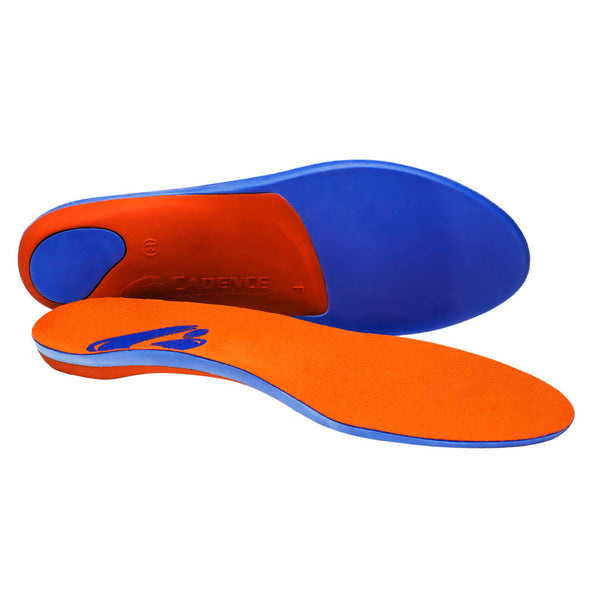
Cadence Original
$44.95
-
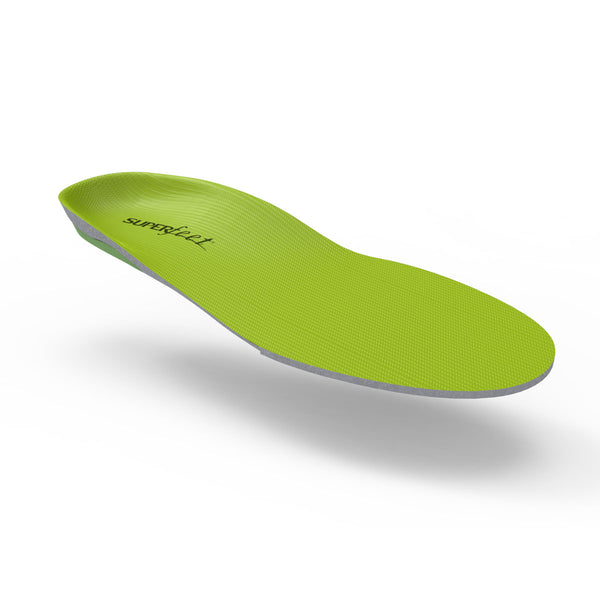
-
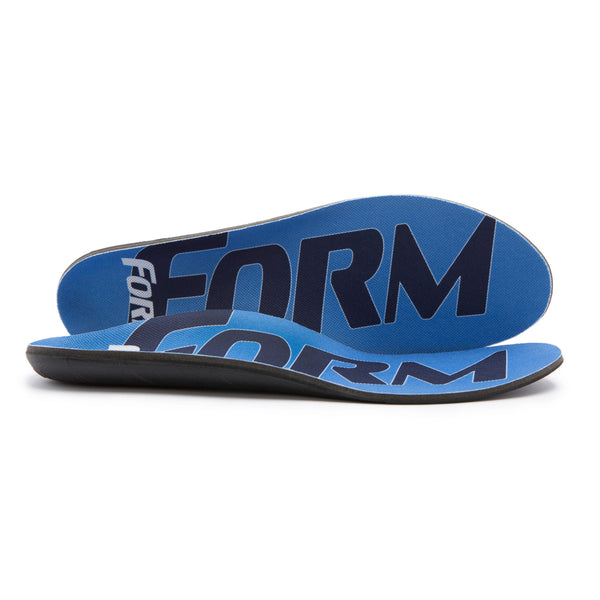
Maximum
$44.95
-
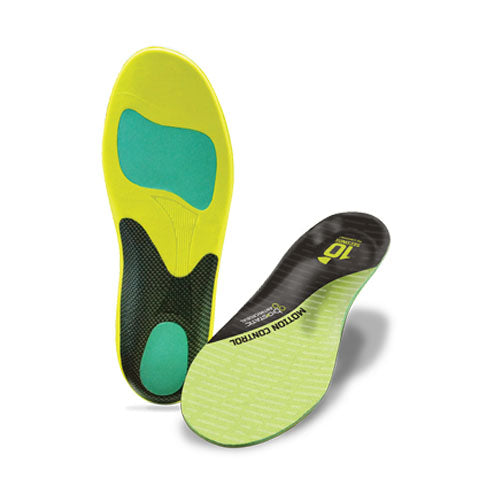
Motion Control
$49.99
Browse our full collection of insoles for overpronation.
What is Pronation?
You may think that a morning run is the simplest of sports - just lace up your sneakers and get at it right?
A simple run or walk is much more complex than that though. And we don’t mean stretching before you hit the pavement.
There is a key piece of equipment you use with every run: your feet. Every time your foot strikes the ground, a series of coordinated movements absorb shock to keep you moving forward and keep your body in balance. One of these movements is pronation.
There are three kinds of pronation:
Normal/neutral pronation: Neutral pronation is when your foot rolls inward naturally to absorb shock and keep you balanced. It is normal for the foot to roll inward around 15%.
Underpronation (supination): Underpronation occurs when the foot rolls outward when you make contact with the ground. This most commonly occurs in people with high arches and can cause achilles tendonitis, plantar fasciitis, shin splints, and IT band syndrome.
Overpronation: Overpronation occurs when your foot rolls more than 15% and downward when you step. People who overpronate are said to have ‘flat feet’ and are at risk for injuries such as IT band syndrome.
What Is Overpronation?
Every time you walk or run your foot naturally pronates and supinates to absorb shock.
This movement allows your foot to become a mobile adaptor as you step on the ground. It then it swings into a rigid lever to help you propel forward. This mechanical process is a natural marvel, however if you have low arches or poor form it can be thrown out of balance.
When your foot is too flexible and stays as a mobile adaptor through most of the gait cycle, excessive pronation occurs. This can also occur when you have low arches, allowing the foot to sink inward with each step.
When this happens, your foot becomes unstable and strains the toes, along with causing excessive rotation of the foot and lower leg. At times overpronation will also cause pain in the heel due to extra tension on the ligaments and tendons of the foot that attach to the heel.
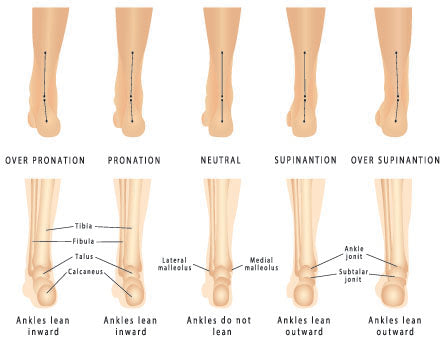
When your foot is too flexible and stays as a mobile adaptor through most of the gait cycle, excessive pronation occurs
What Causes Overpronation?
Overpronation is generally seen in those who have low arches, flat feet, fallen arches, or very flexible feet.
Those with one of these foot types may have been born that way or may have acquired it over time because of genetics or injury. Flatfooted runners are prone to overpronation and overuse injuries and should be sure to wear proper support to prevent injury.
There is little one can do to prevent the cause of overpronation but there are things that can be done to remedy the problem.
How Can I Tell If I Overpronate?
There are a few simple ways to tell if you overpronate.
The wear test
You can try the ‘wear test’ by examining your running shoes for wear.
If you overpronate the shoe will show excessive wear along the inner edge from the big toe towards the ball of the foot.
Neutral pronation will have relatively even wear down the middle, mostly in the toes/ball of the foot and the heel.
If you supinate then you will have wear on the outside of the foot, from the pinky toe down the outside edge of the shoe.
The water test
Another simple test is the ‘water test’. All you need is to wet your foot and examine your footprint on a dry surface - a piece of cardboard works great for this.
Simply wet your foot and step down. If you overpronate you’ll have a very wide footprint in the middle as more of your foot comes in contact with the ground. A neutral footprint will have a thinner midsection, and those who supinate will have a very slight midsection as most of their weight is on the outer edge of the foot.
Treatment For Overpronation
Overpronation can be reduced by wearing proper footwear and arch supports. Proper footwear will provide the added support you need to ensure you are not overpronating as you step and help prevent injuries caused by excessive pronation.
Choose the Right shoes
Motion control shoes can help to position your foot properly as you walk or run. This will encourage the foot to function with a more posturally correct balance of pronation and supination.
If you overpronate and need an athletic shoe, make sure to pick a shoe with maximum support and structured cushioning, such as “motion control” or “stability” shoes. For all your other shoe and boot choices, it is important to make sure you choose stable, supportive footwear.
As a rule of thumb, if you can bend a shoe in half it is too flimsy and will increase your risk of injury. It is also a good idea to avoid going barefoot, even inside. Wearing supportive shoes or slippers can help to reduce the tension overpronation causes on the feet and legs.
Wear Supportive Orthotics or Insoles
Motion control insoles or orthotics can help to position your foot properly as you walk or run. They can also add structure and support to weaker shoes, keeping your foot secure and ensuring you have proper form as you walk.
You may be prescribed custom orthotics, however there are plenty of high quality generic orthotic inserts that can add support to your shoes and prevent overpronation. Here are some of the best insoles for overpronation:
- Cadence Original Insoles
- Ten Seconds Motion Control Insoles
- Form Maximum Insoles
- Prothotic Motion Control Insoles
- Powerstep Pinnacle Maxx Insoles
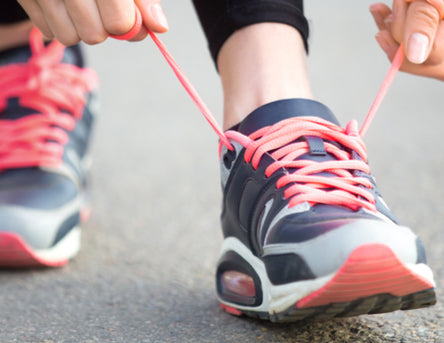
Wearing supportive shoes can help to reduce the tension overpronation causes on the feet and legs.





